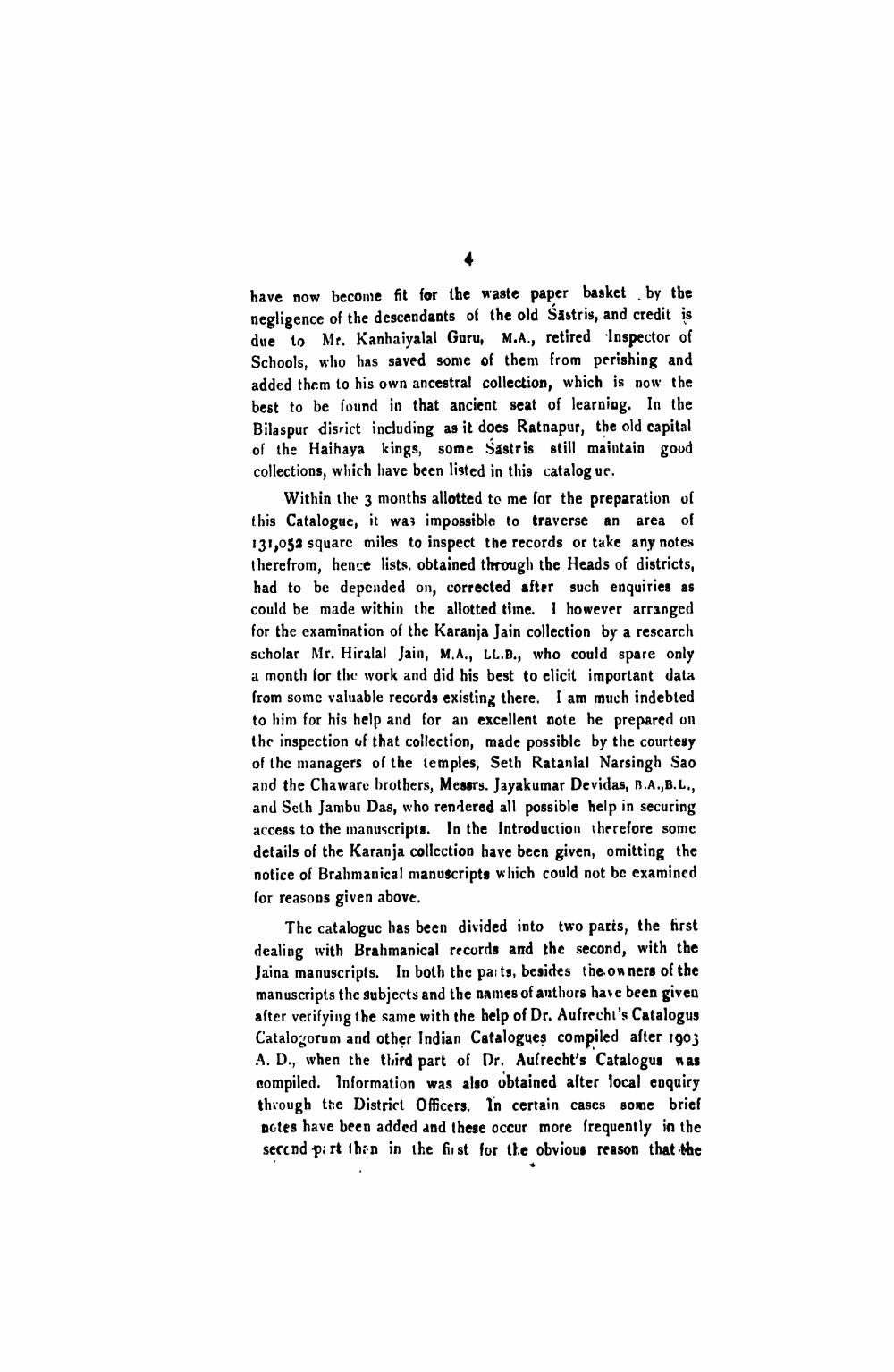________________
have now become fit for the waste paper basket by the negligence of the descendants of the old Sastris, and credit is due to Mr. Kanhaiyalal Guru, M.A., retired Inspector of Schools, who has saved some of them from perishing and added them to his own ancestral collection, which is now the best to be found in that ancient seat of learning. In the Bilaspur disrict including as it does Ratnapur, the old capital of the Haihaya kings, some Sastris still maintain goud collections, which have been listed in this catalogue.
Within the 3 months allotted to me for the preparation of this Catalogue, it was impossible to traverse an area of 131,052 square miles to inspect the records or take any notes therefrom, hence lists, obtained through the Heads of districts, had to be depended on, corrected after such enquiries as could be made within the allotted time. I however arranged for the examination of the Karanja Jain collection by a rescarch scholar Mr. Hiralal Jain, M.A., LL.D., who could spare only a month for the work and did his best to elicit important data from somc valuable records existing there. I am much indebted to him for his help and for an excellent note he prepared on the inspection of that collection, made possible by the courtesy of the managers of the temples, Seth Ratanlal Narsingh Sao and the Chaware brothers, Messrs. Jayakumar Devidas, B.A., B.L., and Seth Jambu Das, who rendered all possible help in securing access to the manuscripts. In the Introduction therefore some details of the Karanja collection have been given, omitting the notice of Brahmanical manuscripts which could not be examined for reasons given above.
The catalogue has been divided into two parts, the first dealing with Brahmanical records and the second, with the Jaina manuscripts. In both the parts, besides the owners of the manuscripts the subjects and the names of anthors have been given after verifying the same with the help of Dr. Aufrecht's Catalogus Catalogorum and other Indian Catalogues compiled after 1903 A. D., when the third part of Dr. Aufrecht's Catalogus was compiled. Information was also obtained after local enquiry through the District Officers. In certain cases some brief notes have been added and these occur more frequently in the second p: rt than in the first for the obvious reason that the




